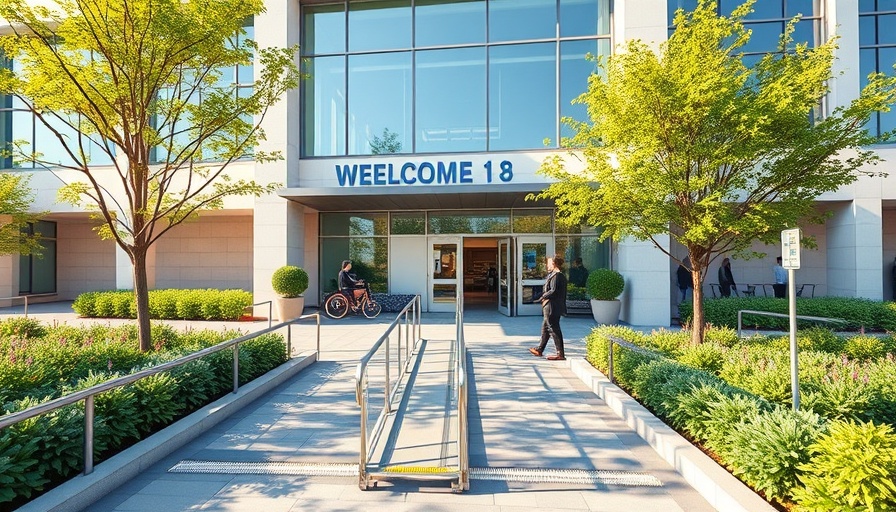
Understanding Sink Height Regulations: A Vital Component of Wheelchair Accessibility
As the population ages and more individuals require mobility assistance, understanding the sink height regulations for wheelchair accessibility becomes critical. Properly designed bathrooms not only comply with federal regulations but also enhance the daily lives of those with disabilities. This article aims to explore the standards set forth by the Americans with Disabilities Act (ADA) and the importance of adhering to these mandates in home modifications.
The Importance of Complying with ADA Standards
The ADA provides clear guidelines regarding the height of sinks to ensure that individuals using wheelchairs can access necessary facilities comfortably and safely. The standard height for sink installation is set at 34 inches above the floor. This specific measurement allows individuals in wheelchairs to maneuver close enough to the sink to use it effectively without strain.
By following these guidelines, homeowners not only promote inclusivity but also enhance their property value. Homes that meet ADA requirements can be more appealing if they are put on the market, as older adults and families of individuals with disabilities increasingly seek accessible living spaces.
Parallel Examples: How Accessibility Promotes Independence
Consider an inspiring example from a recent success story in a suburban community where a couple renovated their home to be more wheelchair-friendly as they aged. They installed a sink at the appropriate height, ensuring easy access for themselves and their visiting family and friends. This simple modification not only elevated their independence but also encouraged more gatherings at home, enriching their social lives.
This situation exemplifies the practical benefits of adhering to sink height regulations. When small adjustments are made in design and structure, they can significantly influence quality of life and social interaction.
Counterarguments: Understanding Resistance to Compliance
While many recognize the importance of accessibility, some homeowners might hesitate to invest in necessary modifications due to cost concerns. It’s crucial to understand these sentiments and to highlight that adopting ADA-compliant installations can be cost-effective in the long run, as they can reduce the need for more expensive renovations in the future.
Furthermore, modifications are often perceived as unattractive or unappealing. However, today’s design solutions offer a range of stylish and functional options, proving that accessibility doesn’t have to compromise aesthetic appeal.
Future Trends in Home Modifications for Accessibility
As we look toward the future, an increasing number of homeowners are recognizing the value of accessible design. Growing awareness around aging populations and disability rights mean that regulatory compliance is not merely a legal necessity but also a personal choice that reflects one's values.
Investing in resources like expert consultations or up-to-date regulatory and compliance guides can provide the knowledge necessary to navigate home modifications wisely. With more technology available to assist in these adaptations, the future of home design looks promising.
Practical Tips for Homeowners: Implementing ADA Standards
For those ready to make their homes more accessible, here are some practical tips:
- Consult Professionals: Hire experts who specialize in ADA compliance to evaluate your space and provide tailored recommendations.
- Stay Informed: Familiarize yourself with ongoing updates to accessibility regulations to ensure your modifications remain compliant.
- Explore Funding Options: Research grants and financial assistance programs that can help offset renovation costs.
By taking these steps, homeowners can contribute to creating welcoming spaces for all individuals, regardless of mobility challenges.
The Benefits of Advocacy and Awareness
Advocating for accessibility in private homes contributes to a broader societal commitment to inclusivity. As communities work together to raise awareness about the need for adaptable living spaces, we collectively move toward a future where everyone, regardless of their physical capabilities, can enjoy their homes fully. This cultural shift not only enriches lives but promotes a sense of belonging for those with disabilities.
Final Thoughts and Call to Action
Understanding and implementing sink height regulations for wheelchair accessibility is not just about compliance; it’s about creating an inclusive environment where everyone can thrive. By taking these steps, you not only improve your quality of life but also support the community around you.
If you’re considering modifications to your home, don’t wait! Start by researching compliance requirements today and learn how you can make a positive change in your living space. Accessibility improvements are essential for a better living experience for all.
 Add Row
Add Row  Add
Add 




Write A Comment